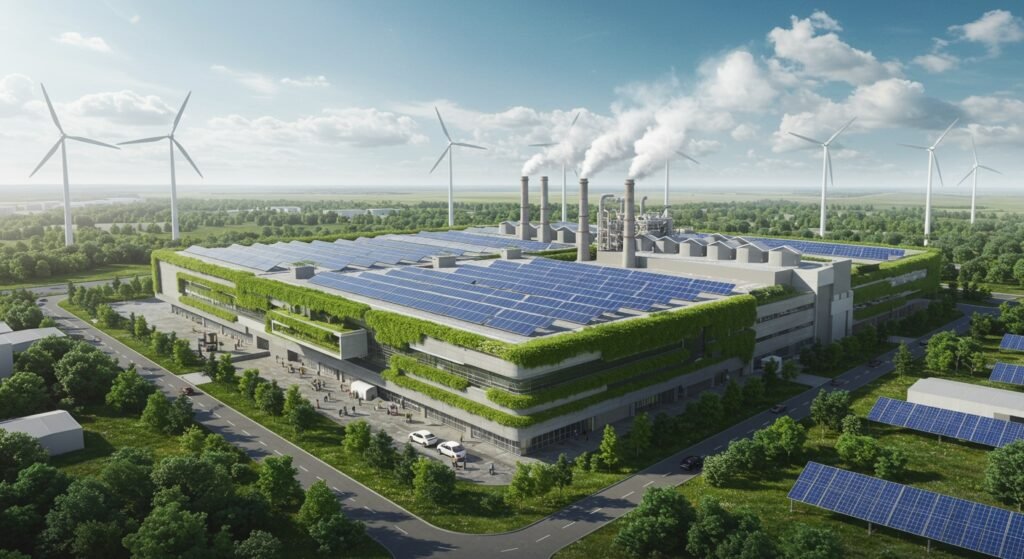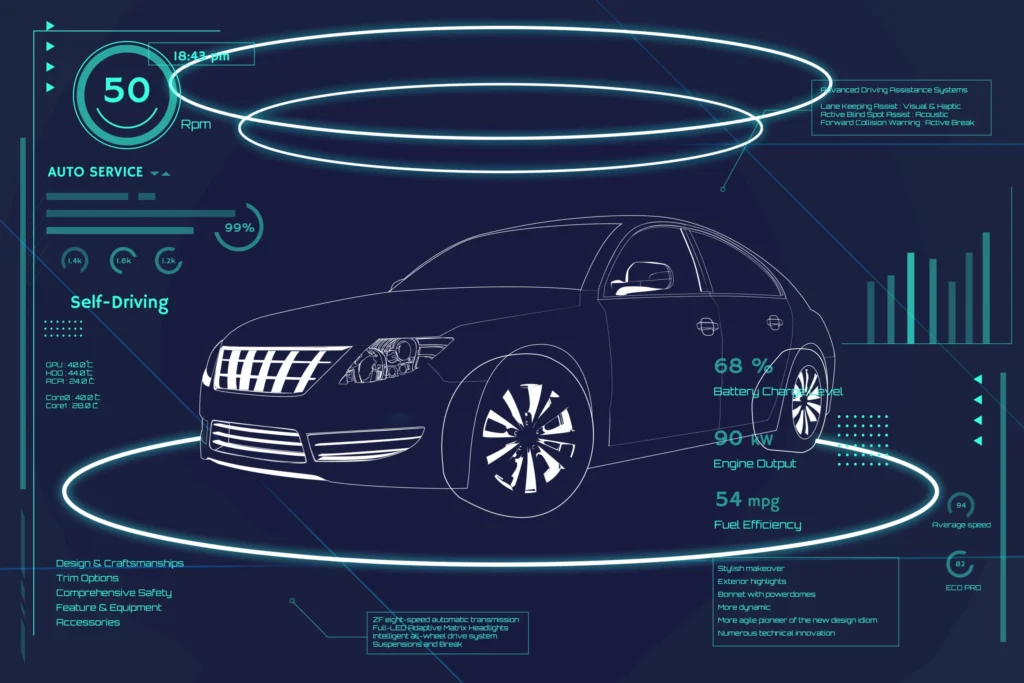The Rise of Carbon-Neutral Factories: Challenges and Opportunities
The global industrial landscape is undergoing a profound transformation, driven by an urgent need to address climate change. At the heart of this shift is the concept of carbon neutrality, a state where factories achieve net-zero carbon dioxide emissions. This ambition signals a radical departure from traditional manufacturing practices, promising a future where production thrives without harming the planet. But what does it truly take for a factory to become carbon-neutral, and what are the formidable challenges and exciting opportunities that lie on this path?
Table of Contents
- What Does Carbon Neutrality Truly Mean for Industry?
- The Driving Forces Behind the Shift
- Key Challenges in Achieving Carbon Neutrality
- Opportunities and Innovations
- The Path Forward: Strategies for Success
What Does Carbon Neutrality Truly Mean for Industry?
Defining Carbon-Neutral Manufacturing
At its core, achieving carbon neutrality means balancing the amount of carbon released into the atmosphere with the amount removed or offset. For factories, this translates into a multifaceted strategy encompassing energy efficiency, renewable energy adoption, process optimization, and sometimes, carbon offsetting mechanisms. The goal is to minimize direct emissions from operations and indirect emissions from purchased electricity and heat, moving towards a truly sustainable production model.
The Urgency for Decarbonization
The scientific consensus on climate change necessitates rapid and drastic reductions in greenhouse gas emissions. Industrial sectors, historically major contributors, are now under immense pressure from governments, investors, and consumers to decarbonize. The transition to carbon neutrality is not merely an environmental imperative but a critical strategic move for long-term business viability and competitiveness.
The Driving Forces Behind the Shift
Regulatory Pressures and Global Commitments
Nations worldwide are implementing stricter environmental regulations and setting ambitious net-zero targets. Carbon pricing, emissions trading schemes, and mandates for renewable energy integration are becoming common. Companies that proactively adapt to these regulations can gain a significant competitive edge and avoid future penalties.
Consumer Demand and Brand Reputation
Modern consumers are increasingly environmentally conscious, favoring brands that demonstrate genuine commitment to sustainability. Factories that publicly embrace carbon neutrality can enhance their brand image, attract eco-minded customers, and foster greater trust among stakeholders. This positive reputation can translate into increased market share and customer loyalty.
Economic Incentives and Innovation
Governments and international bodies offer various incentives, including tax breaks, subsidies, and grants, to support green technologies and sustainable practices. Furthermore, the push for carbon neutrality is a powerful catalyst for innovation, driving advancements in clean energy, materials science, and manufacturing processes, which can lead to operational efficiencies and new revenue streams.
Key Challenges in Achieving Carbon Neutrality
Energy Transition and Renewable Sources
One of the primary hurdles is transitioning from fossil fuels to 100% renewable energy. While solar and wind power are increasingly viable, ensuring a consistent, reliable supply for energy-intensive manufacturing operations requires significant infrastructure investment and grid modernization. Storage solutions and smart grid technologies are crucial for managing intermittency.
Supply Chain Emissions
Achieving true carbon neutrality extends beyond a factory’s direct operations to its entire value chain. Emissions from raw material extraction, transportation, and end-of-life product disposal can be substantial. Measuring, tracking, and influencing suppliers’ environmental performance presents a complex challenge, often requiring new levels of collaboration and transparency.
Technological Hurdles and Investment
Many industrial processes, such as cement and steel production, are inherently emissions-intensive and difficult to decarbonize using current technologies. Developing and deploying breakthrough technologies like green hydrogen or advanced carbon capture systems requires massive research and development investment, alongside significant capital expenditure for implementation.
Here’s a breakdown of common challenges and their potential solutions:
| Challenge Area | Specific Challenge | Potential Solution |
|---|---|---|
| Energy Supply | Reliance on fossil fuels | Switch to 100% renewable energy (solar, wind, geothermal) |
| Process Emissions | High-temperature industrial processes | Electrification, green hydrogen, carbon capture & utilization |
| Supply Chain | Indirect emissions from suppliers | Supplier engagement, lifecycle assessments, sustainable sourcing |
| Investment | High upfront capital costs | Government incentives, green financing, long-term ROI analysis |
| Technology Gaps | Lack of mature decarbonization tech | R&D investment, pilot projects, cross-industry collaboration |
Opportunities and Innovations
Advanced Materials and Process Optimization
Innovation in material science is leading to the development of low-carbon alternatives, like geopolymers for cement or green steel. Concurrently, optimizing existing manufacturing processes through lean principles and energy-efficient machinery can significantly reduce energy consumption and waste.
Carbon Capture, Utilization, and Storage (CCUS)
For hard-to-abate emissions, CCUS technologies offer a promising avenue. Capturing carbon directly from industrial exhaust and either storing it permanently underground or utilizing it to create new products can play a vital role in achieving comprehensive carbon neutrality.
Digitalization and AI for Efficiency
Digital technologies, including AI, IoT, and big data analytics, are revolutionizing energy management and resource efficiency. Smart sensors can monitor energy usage in real-time, AI algorithms can optimize production schedules to reduce waste, and digital twins can simulate and identify areas for emission reduction, propelling factories towards greater sustainability.
The Path Forward: Strategies for Success
Achieving carbon neutrality is a journey, not a destination, requiring a holistic and strategic approach. It involves setting clear, measurable targets, investing in innovative technologies, fostering a culture of sustainability, and engaging with all stakeholders across the value chain. Factories must also adapt to evolving regulatory landscapes and embrace continuous improvement.
For more insights into global sustainability efforts, you might find valuable information on the UN’s Sustainable Development Goals. Furthermore, understanding the broader implications of industrial shifts can be explored in our article on The Future of Manufacturing Automation.
Conclusion
The rise of carbon-neutral factories represents a pivotal moment for global industry. While the challenges are considerable, from transitioning energy sources to decarbonizing complex supply chains, the opportunities for innovation, economic growth, and environmental stewardship are even greater. By embracing these challenges with strategic planning and technological adoption, manufacturers can not only meet critical climate goals but also secure a resilient and prosperous future for their operations and for the planet. The commitment to carbon neutrality is reshaping industry for the better.


